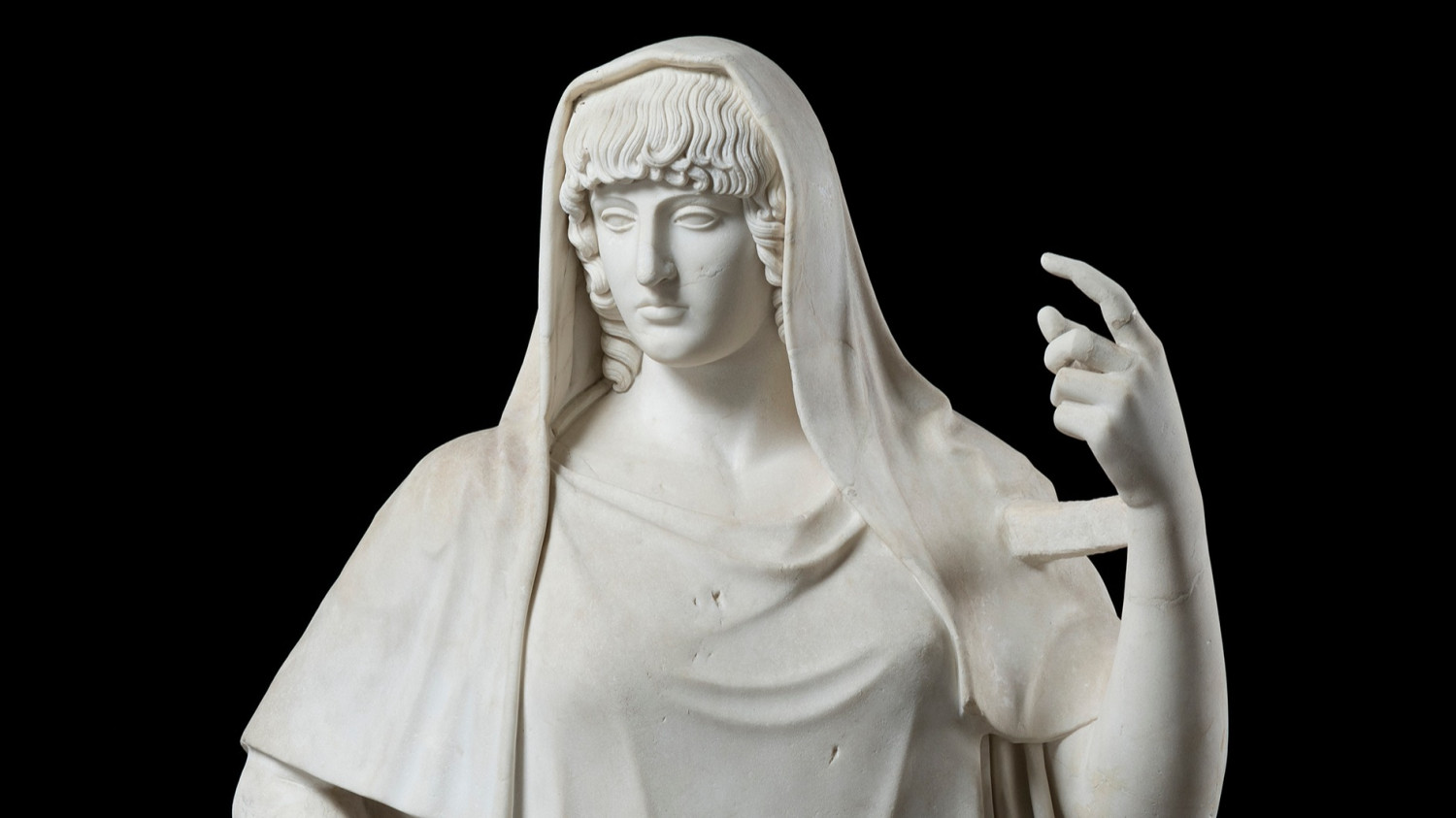The largest ever private collection of ancient Roman sculptures, assembled throughout the 19th century by the Torlonia princes in Rome, is being shown to the public for the first time since the mid-20th century in a series of special exhibitions. The Louvre will have the privilege of hosting the Torlonia marbles for their first showing outside Italy, in the renovated summer apartments of Anne of Austria – home to the museum’s permanent collection of ancient sculpture since its creation in the late 18th century.
Displaying the Torlonia marbles alongside the French national collection will shed new light on the origin of museums and the interest in antiquity – a founding element of Western culture.
Showcasing masterpieces of ancient sculpture, the exhibition will present some truly exquisite treasures of Roman art and explore the origins of museums in Europe during the Enlightenment and the 19th century.
The Torlonia princes followed the aristocratic traditions of papal Rome, developing a passion for ancient sculpture that resulted in a magnificent collection. The Museo Torlonia, which opened in the 1870s, was designed to emulate great public institutions such as the Vatican and Capitoline museums and the Louvre.
Alessandro Torlonia’s museum closed in the mid-20th century after a slow decline, but the Torlonia marbles remained famous in Italy. Since 2020, this first-rate collection of Roman sculpture has been presented to the public once more in a series of special exhibitions. The exhibitions held in Rome and Milan, curated by Salvatore Settis of the Scuola Normale Superiore di Pisa and Carlo Gasparri of the Università Federico II di Napoli, took visitors on a trip through the history of the collection.
The Paris show is intended to display the Torlonia Collection, little known in France, in a setting steeped in the history of museums of ancient sculpture. It will offer an intimate archaeological and aesthetic look at the extraordinary Torlonia marbles as they engage in dialogue with the artworks in the Louvre’s own collection.
It will be held in the summer apartments of Anne of Austria and in the adjacent ‘Salle d’Auguste’ , where Roman sculpture has been displayed in the Louvre since 1798. These spaces have been completely renovated as they will later be home to a newly designed display of the Louvre’s Roman collection.
This exhibition will be a major cultural event of 2024: an outstanding collection of ancient marbles, which had remained virtually unknown until very recently, presented in an exhibition space profoundly characterised by its tradition of displaying sculpture in palatial settings and of prime importance in museum history.
Featuring a selection of exceptional artworks and centred on the masterpieces from the Torlonia Collection, the exhibition will focus on the most emblematic genres of Roman sculpture with its rich and varied artistic styles. Portraits, funerary sculpture, copies of famous Greek originals, works inspired by Classical or Archaic Greek art, figures from the thiasos (procession of satyrs and maenads) and allegories make up a repertoire of images and forms that give Roman art its power. The display of sculptures from both the Museo Torlonia and the Louvre alongside each other will spark a dialogue between these two ’sister’ collections about their respective histories.
Exhibition curator : Cécile Giroire, Director of the Department of Greek, Etruscan and Roman Antiquities, Musée du Louvre.
Research curator : Martin Szewczyk, curator in the Department of Greek, Etruscan and Roman Antiquities, Musée du Louvre.
Co-curators : Carlo Gasparri, University of Naples Federico II, Accademia dei Lincei, and Salvatore Settis, Scuola Normale Superiore di Pisa and member of the Institut de France, Académie des Inscriptions et Belles-Lettres.
Under Surintendance Spéciale de Rome supervision
A WEALTH OF ANCIENT SCULPTURES: THE MUSEO TORLONIA
The exhibition presents the history of the collection, formerly displayed in the Museo Torlonia, and shows how it was shaped by the conditions in which it was assembled. It is made up of sculptures unearthed in and around the city of Rome – the hub of power and artistic production in the Roman West. These masterfully executed works can be seen as examples of ‘erudite art’. It also comprises collectors’ items, some of which were unearthed in the 15th or 16th century and transformed over the years to suit the tastes of the day.
The distinctive nature of the Torlonia Collection – both the last princely collection in Rome, and a museum focused on the future – is best represented by an exceptional piece that was already quite famous in the 17th century: Il Caprone (The Resting Goat), restored by Bernini. The Museo Torlonia was founded on the principles of critical selection and scholarly presentation; it featured masterpieces of Roman sculpture that testify to the collecting habits of the past.
In the second half of the 19th century, the origins of the collection and the significance of the selected pieces inspired Alessandro Torlonia to take an innovative step by creating a museum where the category of artworks known as ‘antiquities’ could be shown to the public. His museum was shaped by the practice of collecting as a pastime but also represented a shift away from that approach, springing instead from the convergence of two historical trends: the aristocratic taste for antiquities and the birth of archaeology as a discipline.
EXHIBITION CATALOGUE
Masterpieces from the Torlonia Collection.
Under the direction of Martin Szewczyk, Carlo Gasparrin and Salvatore Settis.
Co-published by : Louvre éditions/ Le Seuil.
190 illustrations, 340 pages. Format : 24 x 28 cm.
Price : 45 € TTC.
IN THE AUDITOIRIUM MICHEL LACOTTE
Exhibition Presentations
Master pieces from the Torloniac Collection
Thursday 27 june at 12.30 and 7pm.
By Cécile Giroire and Martin Szewczyk, musée du Louvre.
The exhibition layout and all programs linked to the exhibition can be found out in the downloadable press release below.

